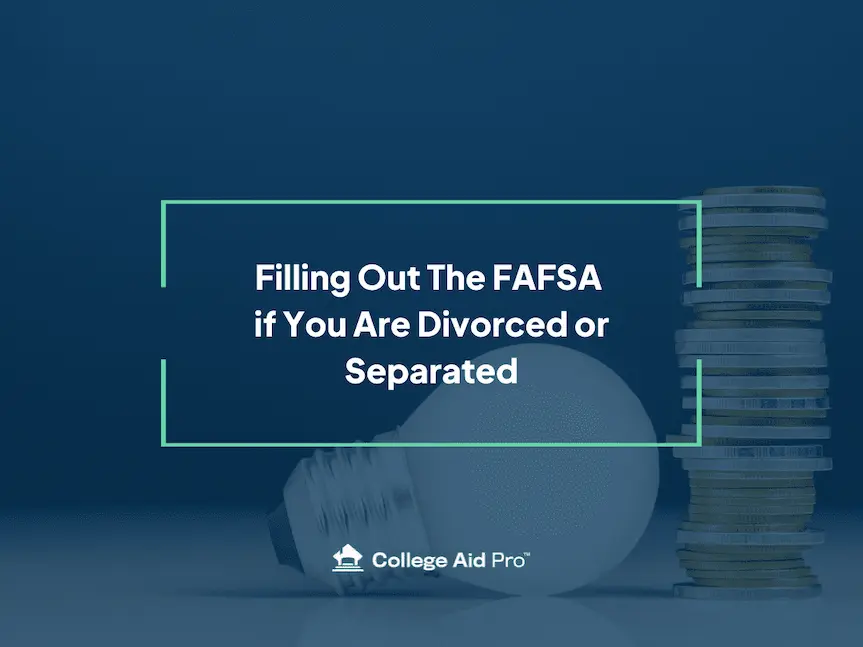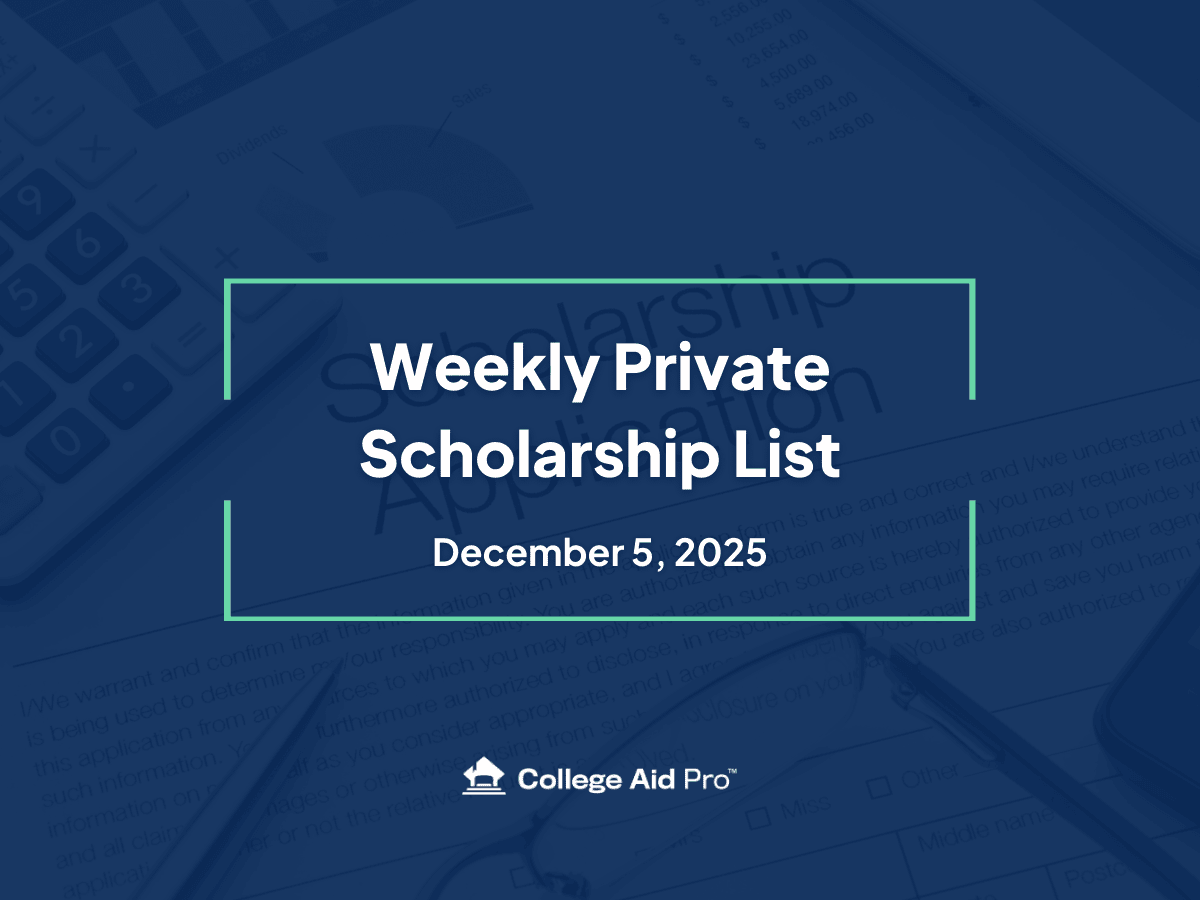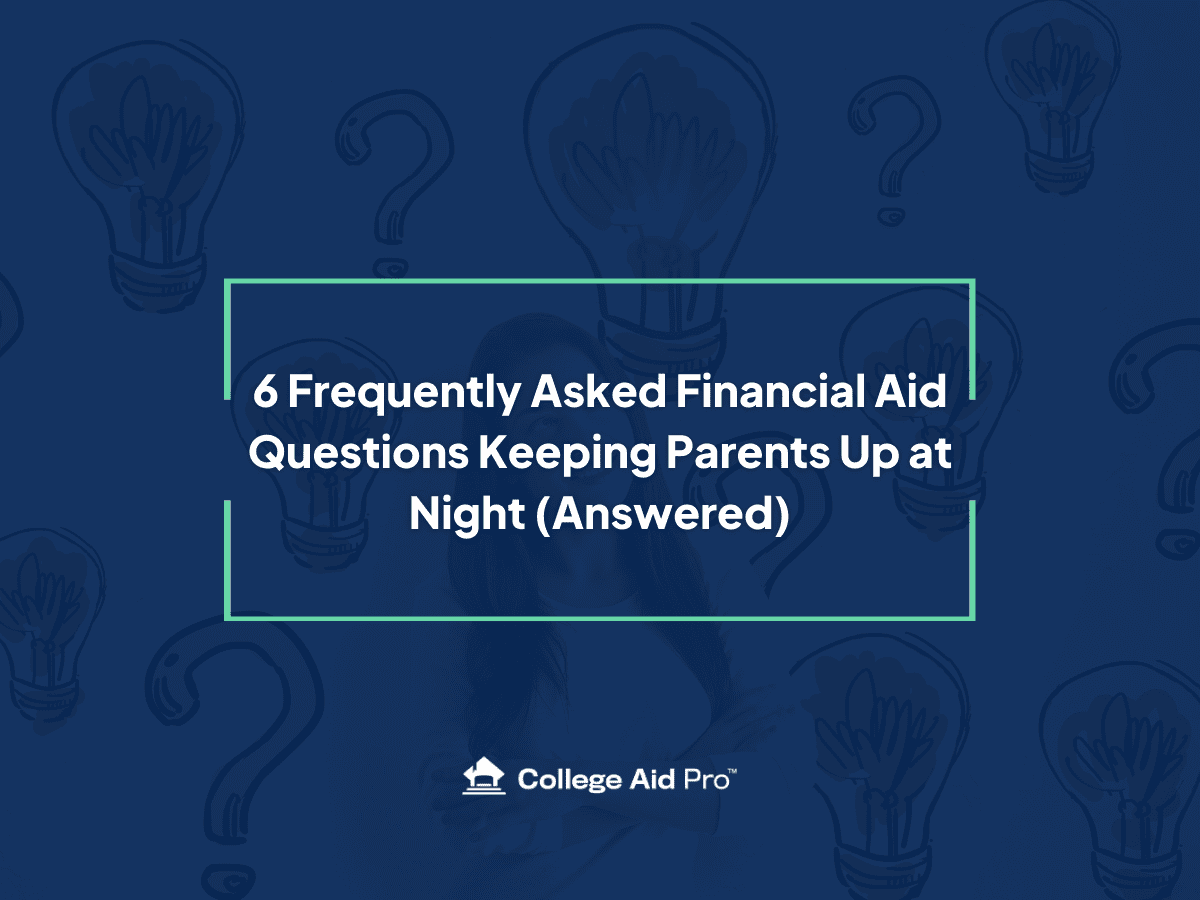FAFSA for Divorced Families: What You Need to Know
If you’re part of a divorced or separated family and have a student preparing for college, you may have heard of the FAFSA—or maybe not! And if you’re feeling a bit unsure about it, you’re definitely not alone. The FAFSA, or Free Application for Federal Student Aid, is the form that every family with a college-bound student should fill out, regardless of whether you think you’ll qualify for aid. Not only does it determine eligibility for federal grants and work-study programs, but it’s also the only way to access Federal Direct Student Loans—a key resource for funding higher education.
But here’s where things get a bit more complicated: when it comes to divorced or separated families, filling out the FAFSA is a little different than it is for families where parents are married and file taxes jointly. The FAFSA definition of “custodial parent” changed in 2024 so let’s make sure you understand how and WHO fills out this form if you are divorced or separated.
In this post, we’ll break down the FAFSA, explain the rules impacting divorced and separated families, and help you plan your approach to the application. If you’re looking for an easy way to calculate your Student Aid Index (SAI) and get personalized advice, create your free MyCAP account—our software is designed to handle calculations for both married AND divorced or separated families. And if you need extra guidance, scheduling a 1:1 consult with our experts is just a click away in your MyCAP account.
A Quick FAFSA 101

First, let’s start with the basics. The FAFSA is a free, government-issued form used to determine a student’s eligibility for federal financial aid. Colleges use the information provided on the FAFSA to calculate how much financial assistance the student might need. Here’s why filling out the FAFSA is crucial:
- Grants and Scholarships: Some grants, like the Federal Pell Grant, are directly linked to the information on the FAFSA. Additionally, many state and college-specific scholarships require a completed FAFSA to consider a student for aid.
- Federal Direct Student Loans: Even if you don’t think you’ll qualify for need-based aid, filling out the FAFSA is a must if you want access to Federal Direct Student Loans. These loans typically have lower interest rates and more flexible repayment options than private loans.
- Work-Study Programs: The FAFSA also determines eligibility for the federal work-study program, which allows students to earn money to help pay for education expenses while they’re in school.
Simply put, the FAFSA is the key to many different types of financial aid and loan options. We encourage everyone to fill it out, even if you think your income might be too high to qualify for federal grants.
How the FAFSA is Different for Divorced or Separated Families

Now, let’s talk about how things differ for divorced or separated families. For married parents filing taxes jointly, the FAFSA requires financial information from both parents to determine the family’s total financial situation. But if you’re divorced or separated, the application process has some unique nuances.
In the Past: The FAFSA used to define the “custodial parent” as the parent with whom the student lived the most during the previous 12 months. That parent’s income (and, if remarried, their spouse’s income) was used to calculate financial aid eligibility. This definition made it relatively easy to figure out whose information needed to be reported.
Now: Beginning with the 2024-2025 FAFSA, the “custodial parent” is now defined as the parent who provides the most financial support to the student, regardless of where the student lives most of the time. This change requires families to take a closer look at who contributes more financially—and it’s not always as straightforward as it sounds!
What the Changes Mean for Divorced Families

For divorced or separated families, this new definition of “custodial parent” means you need to do a bit of financial detective work. Here’s what you need to consider:
1. Gathering Financial Information
The FAFSA now focuses on financial support rather than just living arrangements. When figuring out which parent meets the “custodial” definition, consider all forms of financial contributions, including payments for tuition, school supplies, healthcare, food, clothing, transportation, and more. This requires gathering detailed records to identify which parent provides greater financial support.
2. Communicating with the Co-Parent
Navigating the FAFSA as a two-household family means you’ll need to have a conversation with your co-parent to determine who will claim “custodial parent” status. Sometimes the financial contributions are shared pretty evenly, which can make the choice less clear. In such cases, it might be strategic to select the parent whose income profile results in a more favorable Student Aid Index (SAI).
3. Understanding SAI Impact
Your Student Aid Index (SAI) is the number that colleges use to gauge your family’s ability to pay for college. Since the new “custodial parent” rule can alter which parent’s income is reported, it might shift your SAI and, in turn, affect your financial aid eligibility. This is where our MyCAP account can be a game-changer. You can use MyCAP to run SAI calculations for both scenarios to see which would be most beneficial for your student before you fill out the FAFSA.
4. Verification Process
The FAFSA might require you to verify your financial information, especially if the numbers reported don’t seem to match up with other data. This is why it’s essential to keep thorough records of all financial support provided for the student. Being prepared with documentation will help you breeze through any potential verification checks from the Department of Education.
Your FAFSA Action Plan

The FAFSA opens every year on October 1 to apply for aid for the following school year. If the FAFSA isn’t open yet, you aren’t quite ready to start filling out the FAFSA, or you are an early bird planner and your student isn’t applying to college or in college yet, here’s what you can do now to prepare:
- Calculate Your SAI Now: Create your free MyCAP account and use our SAI calculator to estimate what your financial aid situation might look like. Our software is specifically designed to handle calculations for one- and two-household families, taking the guesswork out of this process. Knowing your SAI in advance allows you to strategize and choose the most beneficial financial reporting for your family.
- Discuss Custodial Parent Status: Have an open conversation with your co-parent about who will be listed as the “custodial parent” for the FAFSA. Consider each parent’s financial contributions and potential impact on aid eligibility.
- Keep Records: Start gathering records of all the financial support provided for your student. This will help you justify the selection of the “custodial parent” if the FAFSA goes through a verification process.
- Get Expert Help: Need more guidance? Your MyCAP account isn’t just about calculating your SAI. Through MyCAP, you can easily schedule a 1:1 consultation with one of our experts for personalized advice on how to approach the FAFSA in your unique situation.
Final Thoughts: The FAFSA Is Your Key to College Aid
Filling out the FAFSA may feel like an overwhelming task, especially with the updated rules for divorced and separated families, but taking a proactive approach can pay off big time. The new “custodial parent” definition means you’ll need to focus on financial contributions rather than just living arrangements, so start gathering those details now. And remember, even if you think you won’t qualify for federal aid, you still need to fill out the FAFSA to access Federal Direct Student Loans and be eligible for other aid opportunities.
With some planning and the right tools, you can navigate these changes with confidence. Create your free MyCAP account today to calculate your SAI and explore the best financial aid strategies for your family. And if you need more personalized advice, scheduling a 1:1 consult through your MyCAP account is the easiest way to get expert guidance tailored to your situation.



